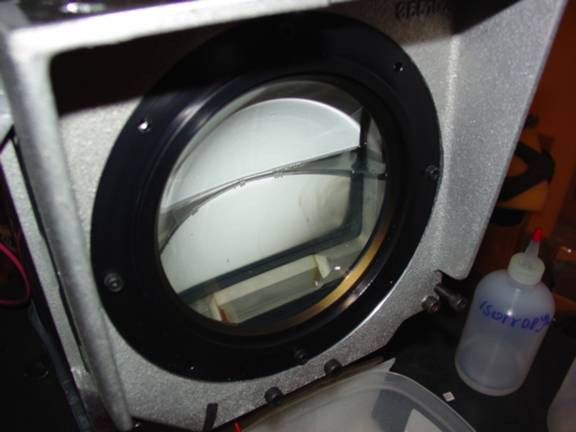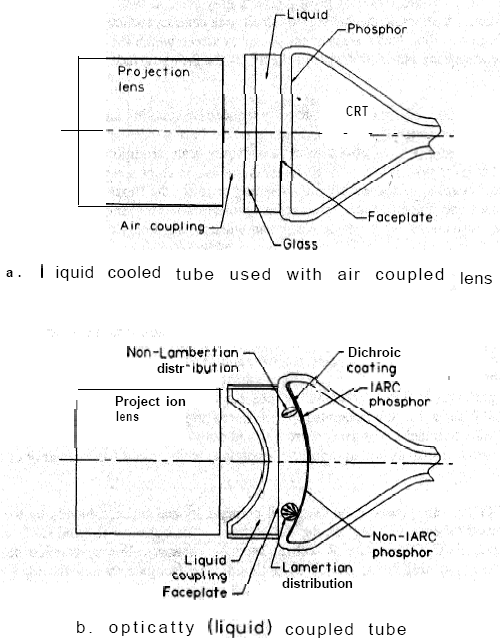 |
CRT Primer
|
Updated: April 2006 |
Liquid-Coupled (LC) vs Air-Coupled (AC)
There are two methods of coupling the CRT face to the lens. The most common
method is called air coupling (AC), and consists of a flat tube face which is then
air coupled to the relatively flat back side of the lens. There is an air gap
between the tube and lens, usually of 1/8” to ¼” or so.
The LC method (Liquid coupled) method of tube and lens coupling consists of
an additional lens (the 'C' lens or 'C' element as it is often called) which is placed in front of the tube itself
and about a pint of cooling/coupling fluid is put between the tube face and the
C lens as illustrated below. The C lens is concave, and the lens back is convex,
and the air gap between the tube and lens is very small.

The new lens assembly along with the cooling fluid eliminates a slight halo
effect that can be seen on non LC sets. This halo is caused by the intense light
that emits from the tube, and a small amount of the light bounces back off of
the lens and into the tube face. As both lens and tube surfaces are flat, a
slight halo is formed by these reflections, and is most noticed when a bright
object is shown against a black background, a moon against a night sky. A non LC
set will show a slight halo around the moon.

With the curved lenses of an LC model, the curves bounce the reflection off
at a sharp angle, and the additional liquid absorbs these reflections, and no
halo is formed. Note that corner focus is very slightly affected, as the image
in the corner of the tubes travels through more liquid than at the middle of the
tube. This slight loss of focusing is not visible on a well set up LC model
however.
|
|




